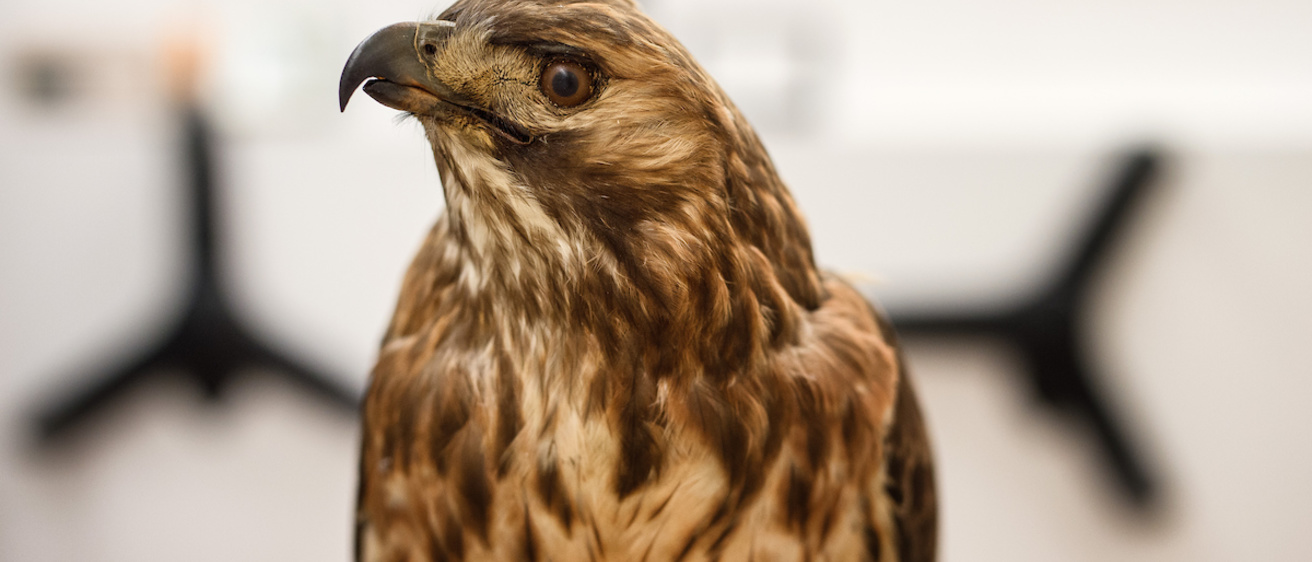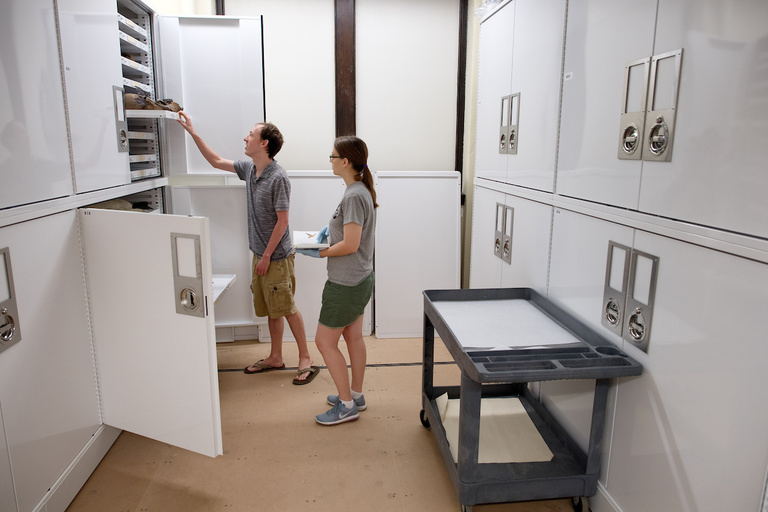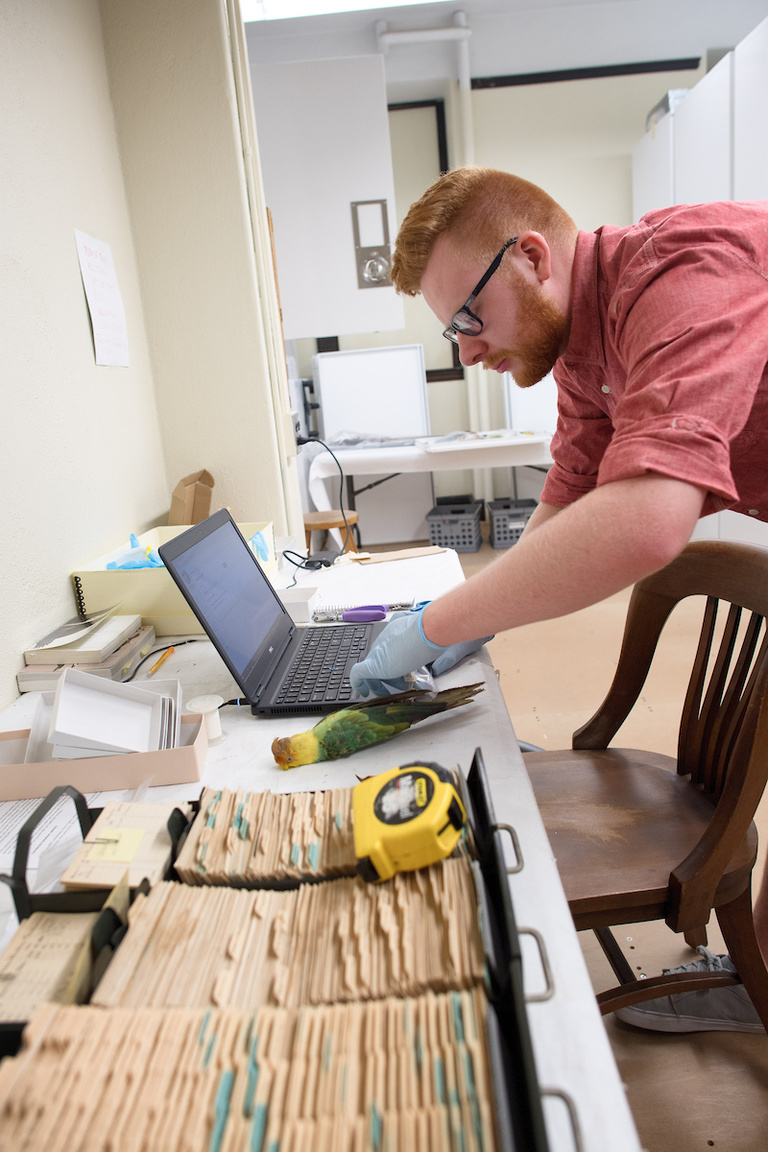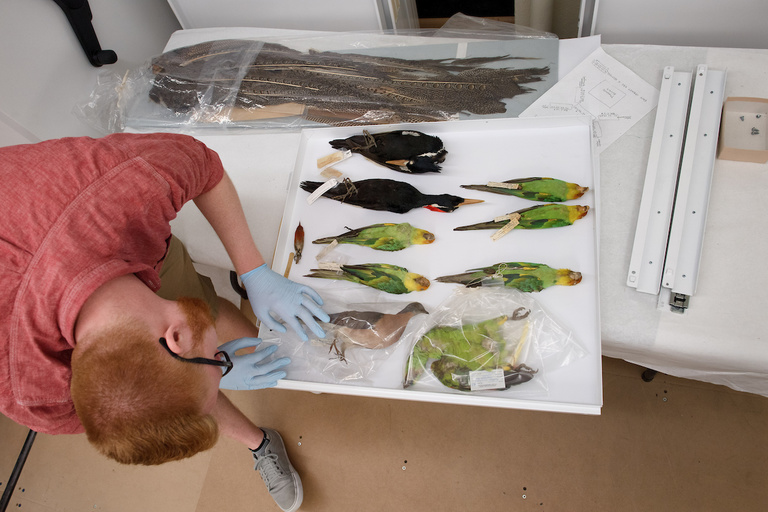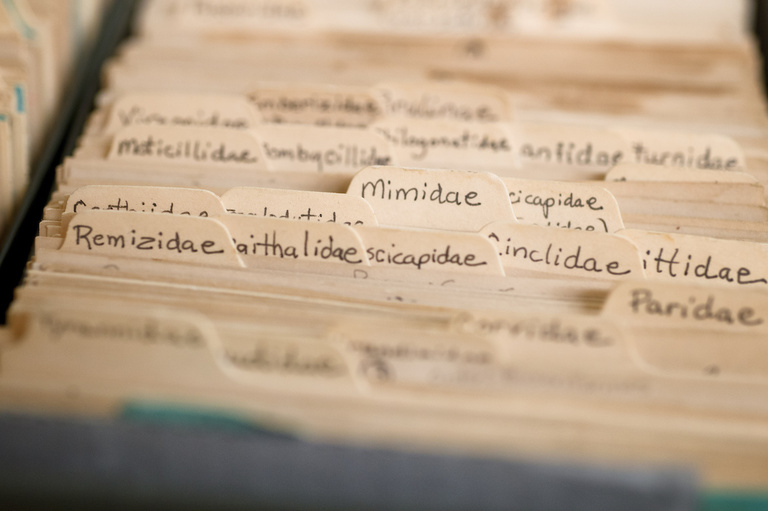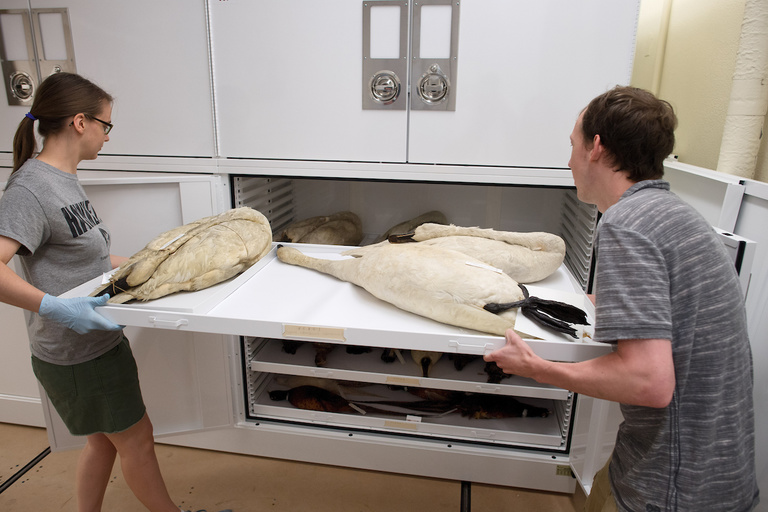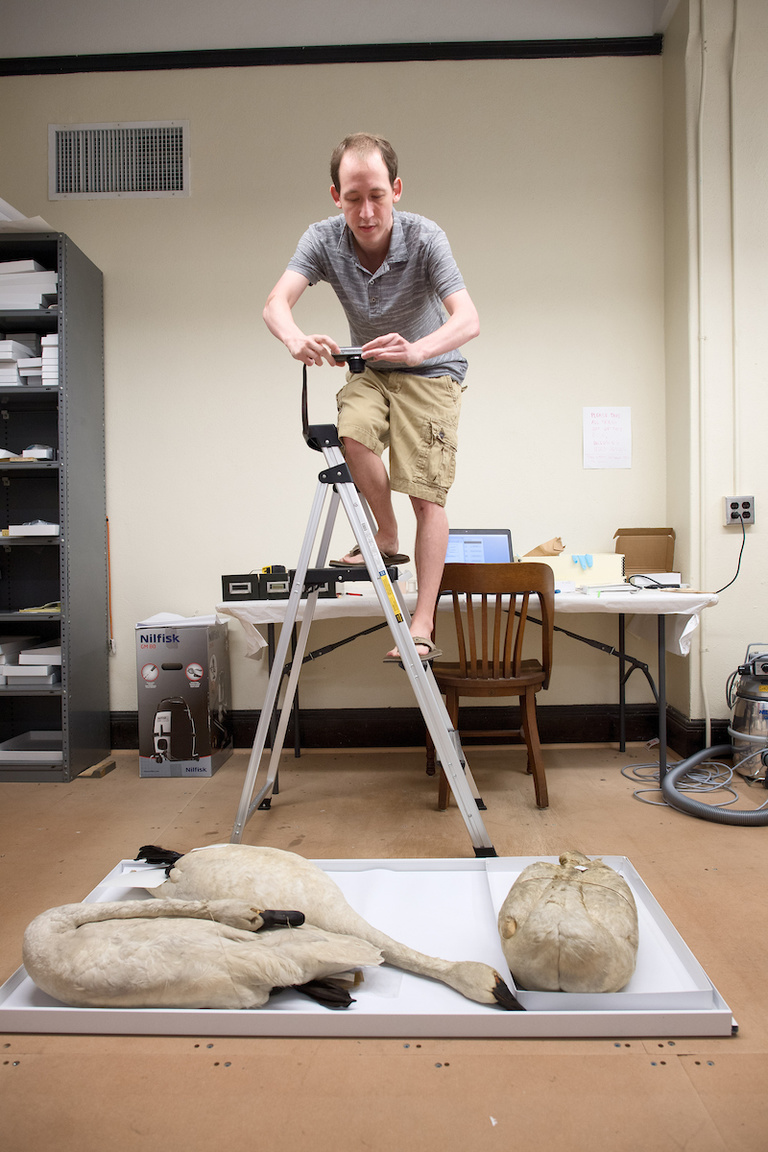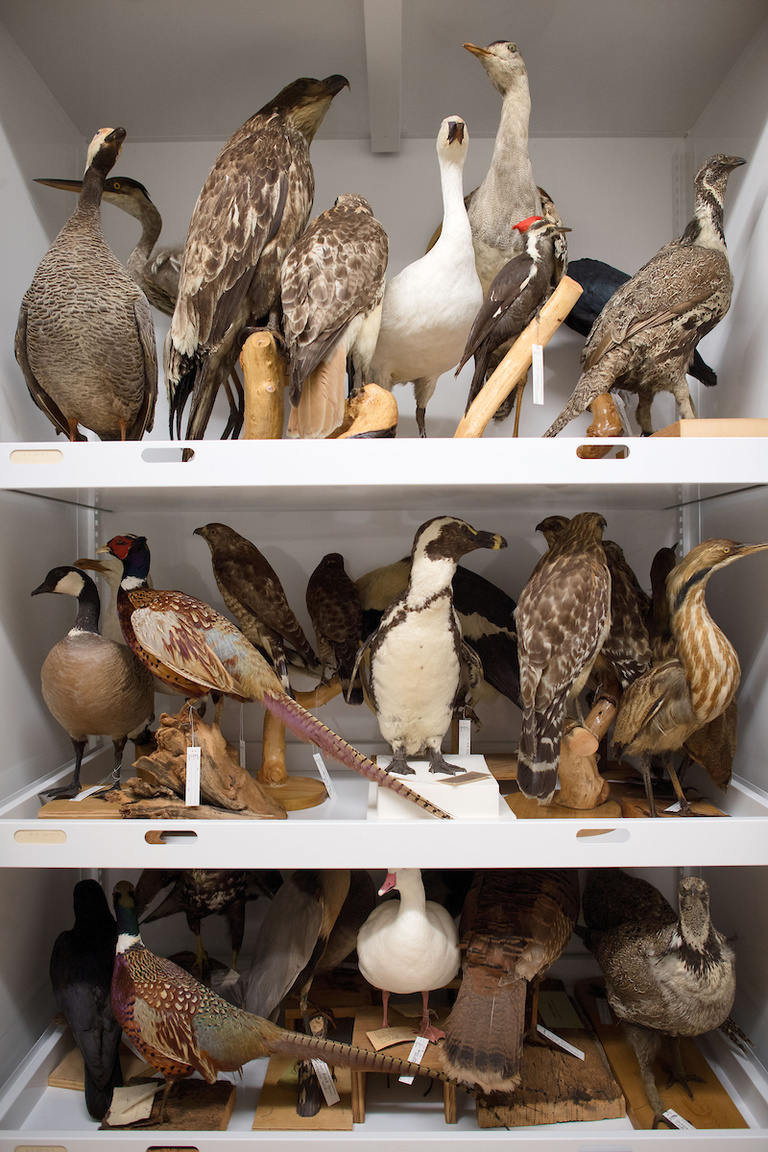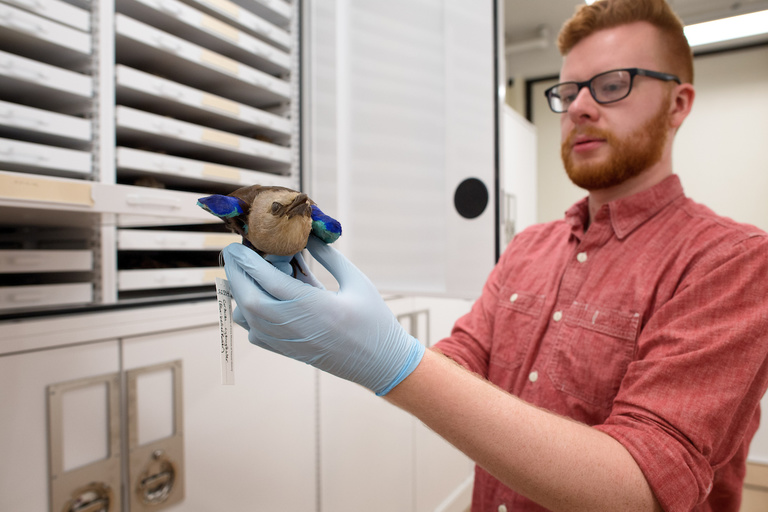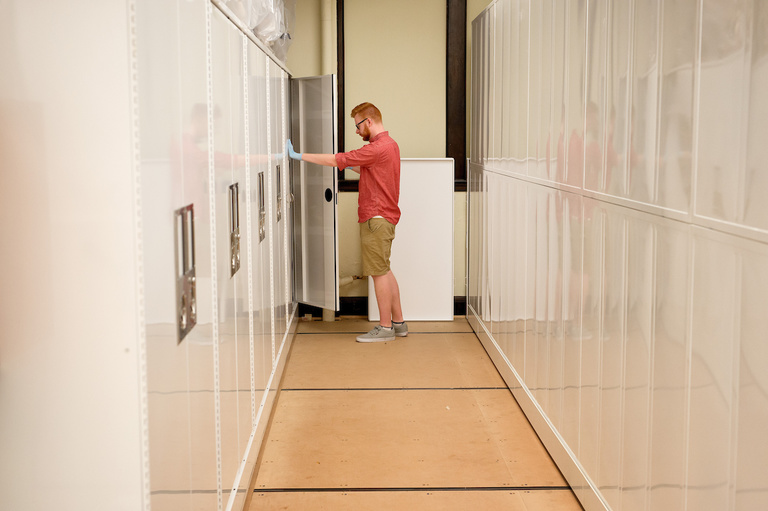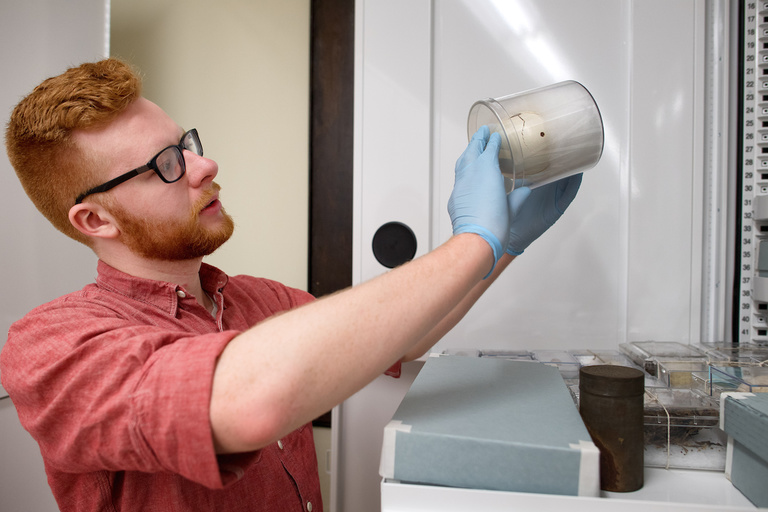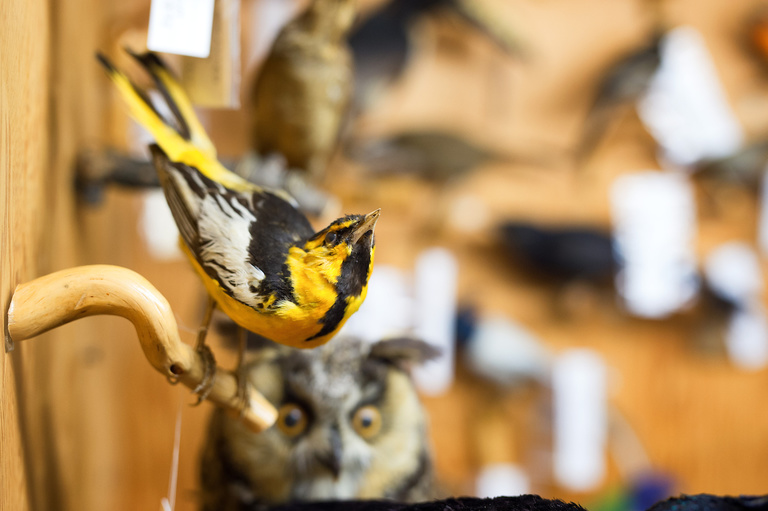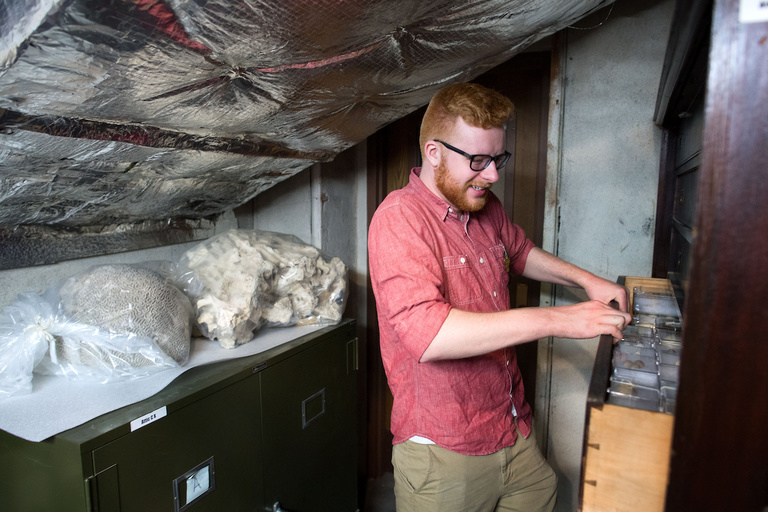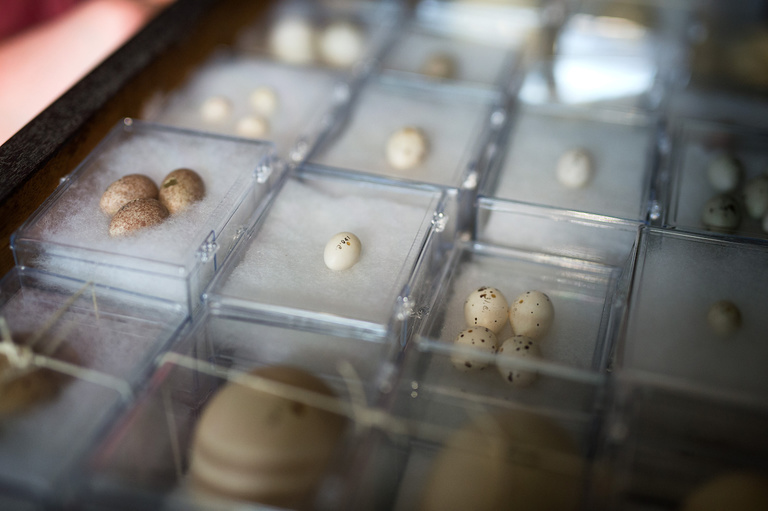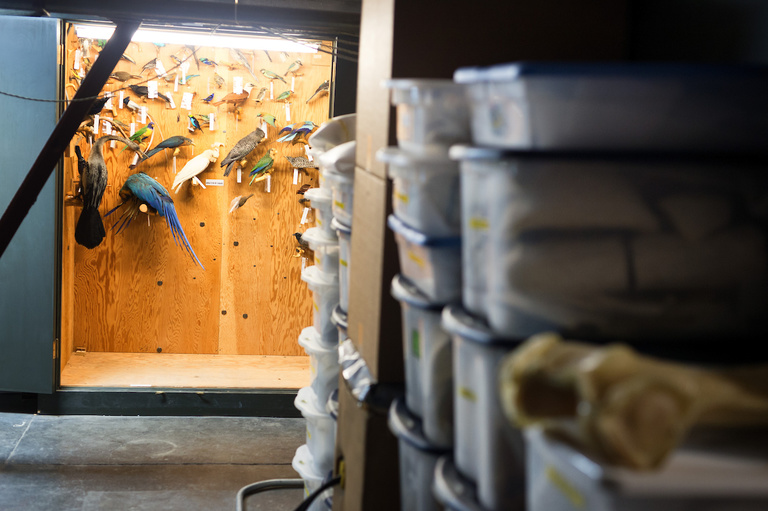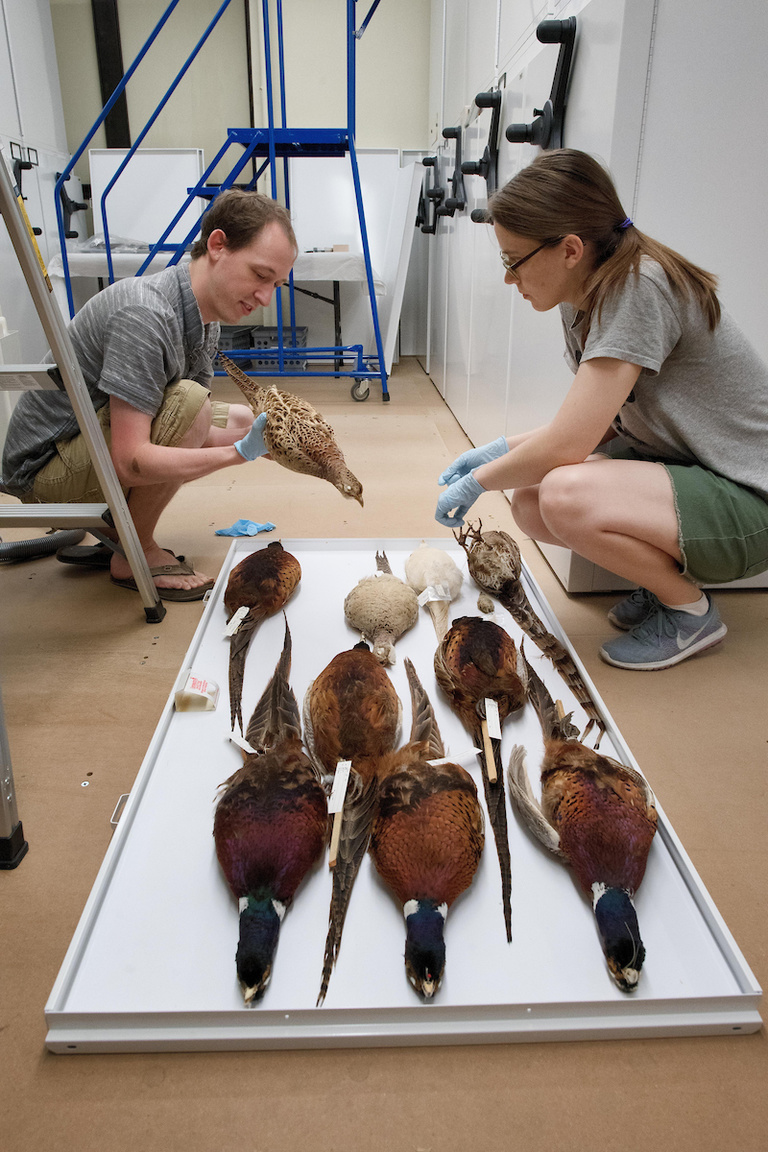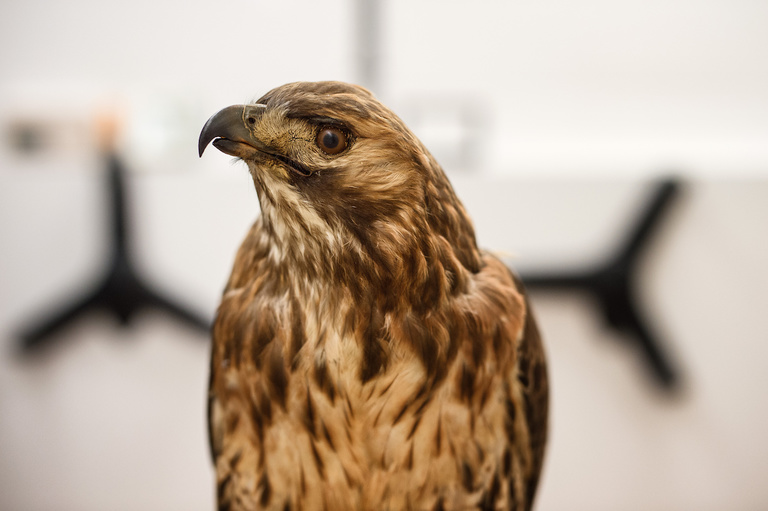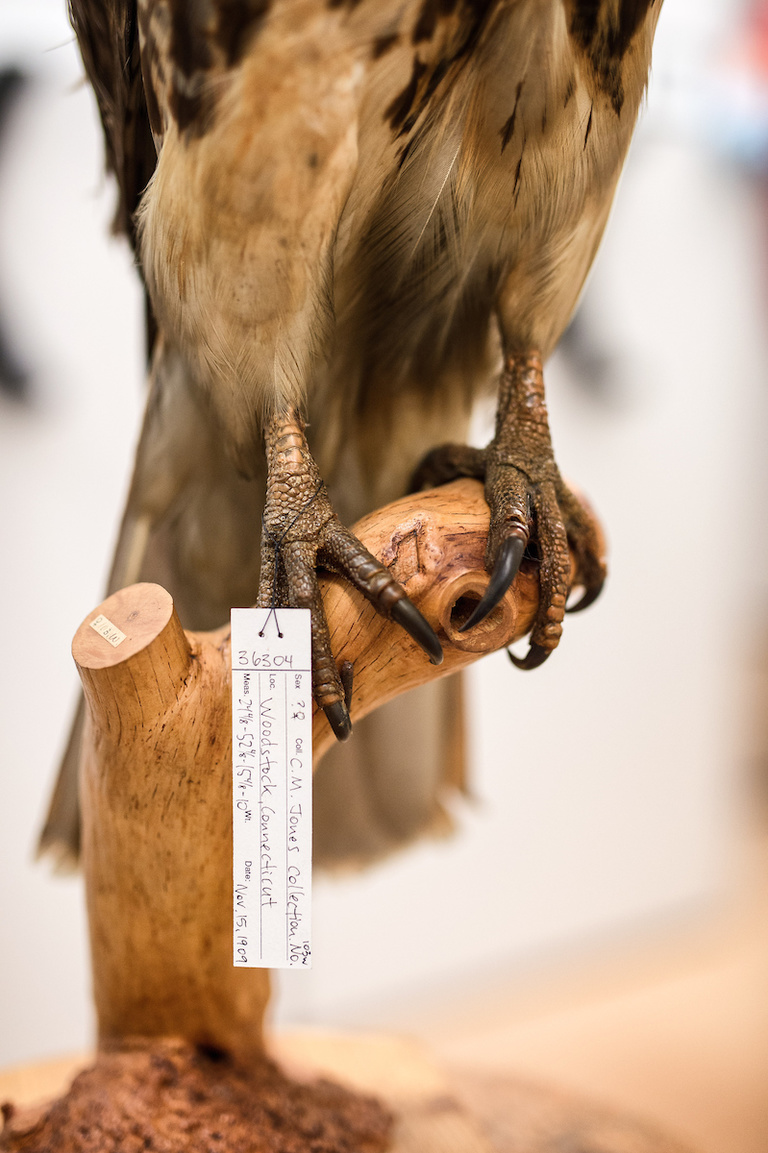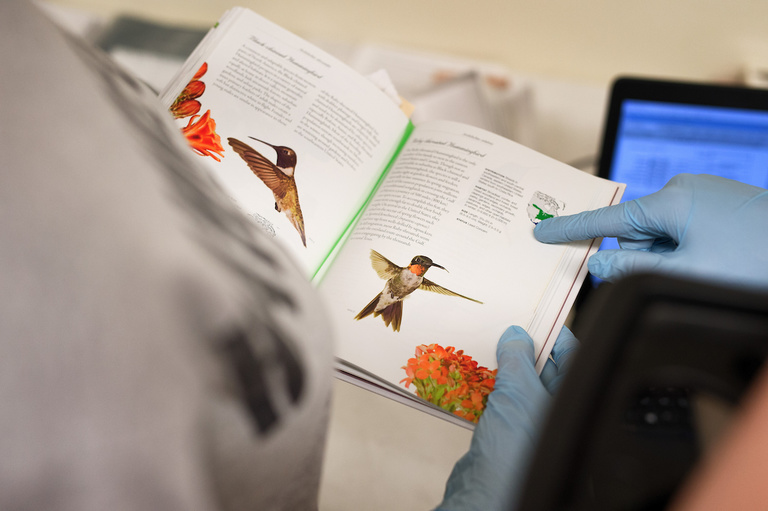As the oldest collegiate museum west of the Mississippi River, the University of Iowa Museum of Natural History (UIMNH) has been accumulating research collections for nearly 160 years. One of its broadest and most interesting is the ornithology collection, which includes more than 31,000 bird, nest, and egg specimens.
Previously, much of this vast collection was stored in the attic of Macbride Hall in wooden cabinetry, the preferred storage of a bygone era. It was not a long-term solution for keeping the collection safe.
“We are interested in preserving these items as well as possible for as long as possible,” says Trina Roberts, director of the UI Pentacrest Museums. “If you want to keep things for a couple hundred years, you’re going to want to invest in good infrastructure.”
The UI Museum of Natural History is seeking the public’s help in transcribing some of the old cards attached to specimens. For more on how you can get involved, visit DIYHistory.
Thanks to a generous Collections in Support of Biological Research (CSBR) grant from the National Science Foundation (NSF), UIMNH has been able to remodel storage space in Macbride Hall. The new climate-controlled facility includes state-of-the-art museum cabinetry, which will better preserve the collection. With UIMNH Collections Manager Cindy Opitz leading the charge, museum staff, student assistants, interns, and volunteers have been hard at work relocating the specimens and digitally recataloguing every item.
Collections like the one at UIMNH have proven valuable to researchers in the past, and they only continue to grow in importance as research technology advances. To put things in perspective: When many of these specimens were collected, DNA research was still far off in the distance. Scientists will undoubtedly find new and innovative ways to learn from UIMNH’s collection in the future.
“We have specimens from these time and space points that nobody else has,” says Roberts. “The way science works is that everyone’s collection turns out to be important because everyone has a piece of this global puzzle. What we have is unique.”
Thanks to the NSF grant, UIMNH can not only better preserve this collection but also update the way it is cataloged and organized to better serve researchers at the UI and beyond. Meanwhile, the students who work on the project get a unique, hands-on experience.
“This kind of support is so important—not just for us, but for museums everywhere,” Opitz says of the NSF grant. “It’s important for the students who interact with our collections, get great life skills out of it, and go into careers in related fields. This kind of support—nothing gets done without it.”
View the slideshow above to see where the collection was stored before, where its going, and what kind of experience students are getting.
